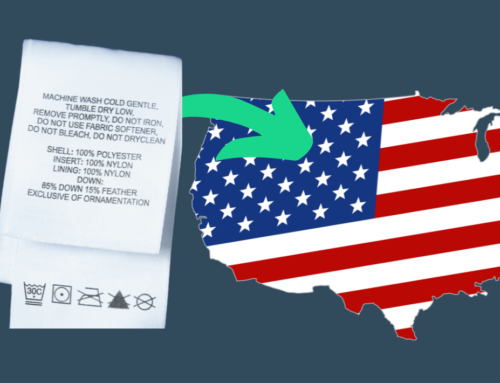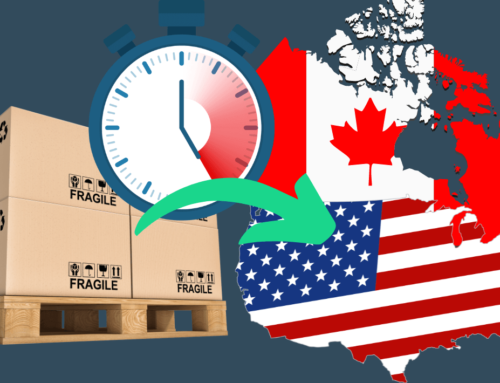How to Import a Race Car into the U.S.

Breeze Customs Blog
Importing a race car into the U.S. can be an exciting and rewarding way for people to expand their automotive interests, explore new avenues of performance, and get involved in the exciting world of motorsport. Moreover, racing is a great way to bond with like-minded individuals over a shared passion, and bringing in a vehicle from another country offers even more potential for thrilling experiences.
Are you interested in importing a racing vehicle into the U.S. but are overwhelmed by the required paperwork or unsure of your next steps? Worry no more, as this blog post will cover everything you need to know about importing racing vehicles into the United States! From determining which organizations regulate imports and familiarizing yourself with the process, we’ll address every detail so you can rest assured, knowing that your foreign racing vehicle can be imported into the U.S. safely, quickly, and within federal standards.
Importation requirements
The first step to importing racing vehicles into the U.S. is to determine whether or not the vehicle was manufactured for racing purposes. Race cars are only considered fit for racing purposes if they are manufactured as such and can thus be permanently imported into the U.S. Otherwise, you can opt for a temporary import, granted for a limited period, after which the car has to be exported or destroyed.
Vehicle importation regulations for racing vehicles
To import a racing vehicle into the United States, three Federal Government bodies issue regulations that you must comply with to swiftly and safely import the car. These are:
- The NHTSA
- THE EPA
- The US ICE / Customs / Homeland Security
You will need to prepare and gather the correct paperwork to submit to U.S. Customs before being granted entry into the United States. Before doing so, gather all relevant information about the racing vehicle, and, if necessary, consider hiring a customs broker to guide you through the process.
Importing a race car into the U.S. on a permanent basis
If you are looking to import vehicles that are originally manufactured as racing vehicles permanently, you will need the following:
- Acquire a letter from the vehicle’s manufacturer that clearly states it was made as a racing vehicle.
- On arrival, check Box 8 of the HS-7 Declaration that will be filed with customs. This box states that the vehicle was not made for use on public roads, so it does not have to comply with the Federal Motor Vehicle Safety, Bumper, and Theft Protection Standards.
- Make a copy of the letter from the car’s manufacturer and attach it to the HS-7 document that will be handed over to customs.
Importing a race car into the U.S. on a temporary basis
Temporary imports apply to vehicles that were not originally manufactured as racing vehicles. Temporary imports are granted for up to three years if the duty is not paid or up to five years if the duty is paid. The vehicle must be exported from the United States 30 days after the import period or it will be destroyed. In this case, you will need a permission letter from the NHTSA.
- Apply for a letter from the NHTSA, allowing you to import the vehicle temporarily.
- On arrival, check Box 7 of the HS-7 Declaration that will be filed with customs. Box 7 declares that while the vehicle does not comply with the Federal Motor Vehicle Safety, Bumper, and Theft Protection Standards, it is imported solely to participate in racing events.
- Make a copy of the letter from the NHTSA and attach it to the HS-7 document that will be handed over to customs.
If the vehicle was manufactured for on-road use, it has to be in race configuration during import and should lack on-road equipment and features.
EPA requirements
The EPA defines racing cars as vehicles modified for racing that cannot be used safely and practically on streets and highways because they lack certain safety features. When importing a race car into the U.S., you may be granted an exclusion if the EPA determines the vehicle is not suitable for public street and highway use because:
- It does not have the necessary safety features for street and highway use.
- Features that make vehicle use unsafe or impractical on public streets and highways have been removed. This pertains to features required by Federal and/or state laws.
To determine whether your racing vehicle should comply with EPA regulations, you will have to submit the following:
- The daytime phone number, address, and name of the importer
- Vehicle information (VIN, model year, make, and model)
- List of racing features (the features that make the car fit for racing)
- List of lacking street features (features that are needed for safe and practical use of the vehicle on streets and highways)
- A minimum of 4 photographs showing each side of the car, the rear, the front, and the interior
- A racing events schedule, including locations and dates where the car will participate
- The competition class and the name of the sanctioning body
- A racing license copy
- Proof the racing vehicle cannot be used on public streets and highways (such as a letter from the department of motor vehicles explaining the car cannot get a license for public road use and explaining the reasons behind this)
On entry, speak to customs and hand in a 3520-1 EPA Form with the EPA letter of approval attached. Remember to keep a copy of the approval letter in case you need it in the future.
Racing vehicles can be imported without a customs bond, but you must receive written approval from the EPA before clearing customs.
Restrictions
Following importation, there are two restrictions you have to keep in mind to avoid violations:
- Once you have imported the racing vehicle into the U.S., you cannot license or register it for use or drive it on public roads, including highways.
- If you decide to convert the racing vehicle to a vehicle fit for use on public roads, you may be considered the new car manufacturer. This results in a daily penalty of $25,000 for failing to comply with EPA requirements.
Conclusion
Whether you’re looking for an interesting weekend project or hoping to become competitive on the international circuit, consider giving yourself an edge by importing a race car into the U.S. today. Importing race cars allows you to stand out from the crowd; instead of just another generic car on the track or at local events, you could show off something unique and special that no one else has. This helps foster even greater involvement with other car enthusiasts. Despite the long list of requirements, importing a race car doesn’t have to be a daunting process with the right customs broker on your side. That’s where Breeze Customs comes in.
Importing racing vehicles with Breeze Customs
At Breeze Customs, we help hundreds of importers bring vehicles into the United States every year without hassle. From checking your vehicle’s admissibility to preparing and filing your documentation, we’ll take the work off your shoulders. Book a meeting with one of our Breeze Customs Concierges and we’ll take it from there.




